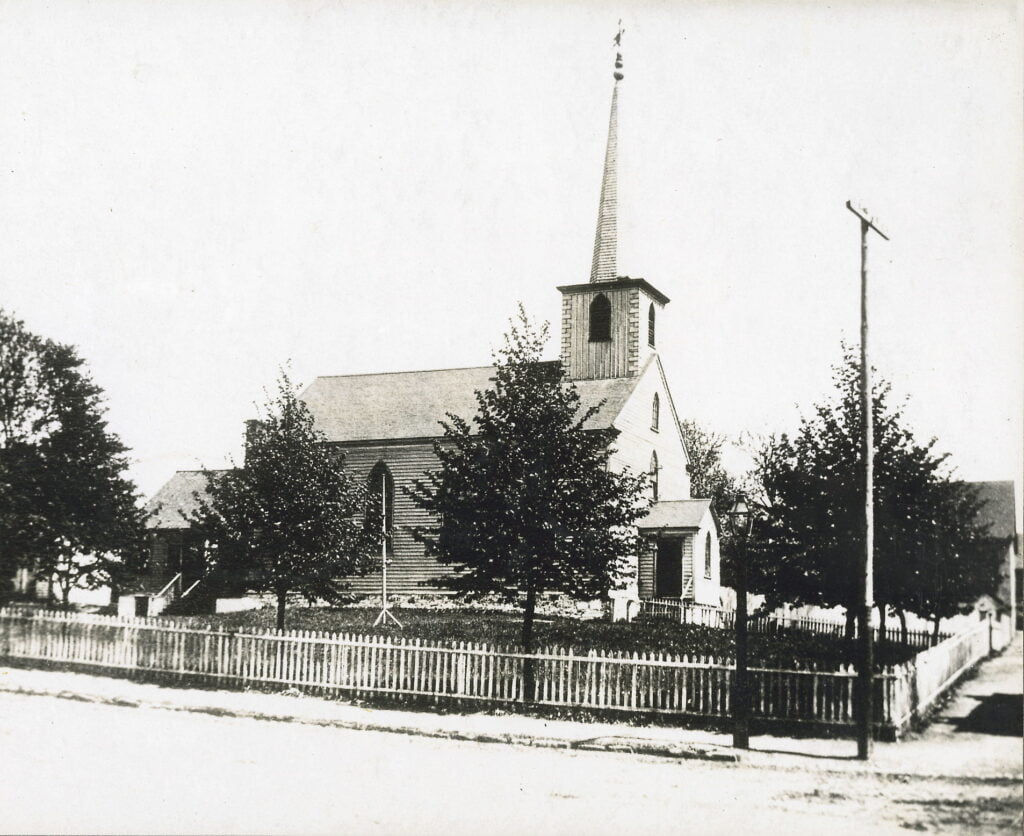
“Old St. Peter’s chapel, 1830-1893, cor. of Ochterloney St. & Chapel Lane, Dartmouth, N.S. View looking east, photographed about 1890. It was re-erected in 1830 from the frame, &c., of the original St. Peter’s Chapel, built in 1784 close to present site of St. Mary’s Cathedral, near corner of Barrington St. & Spring Garden Road, Halifax. The steeple was built on the Dartmouth St. Peter’s in 1831 or very soon after. At right, Chapel Lane, gate to church, Quarrel (Queen) Street extreme middle right. Oil street lamp seen front right on Ochterloney Street, at middle left is the Priests’ house.” https://archives.novascotia.ca/photocollection/archives/?ID=5302

“The chapel was demolished (̶a̶b̶o̶u̶t̶ ̶1̶9̶2̶6̶ ?)” …🤔
The original church was located at the corner of Ochterloney and Edward Street, this part of Edward Street between Ochterloney and Queen was once known as “Chapel Lane“. This site in more recent times was home to a Tim Horton’s, which has since been demolished. Today the site is a parking lot.
From The Story of Dartmouth, by John P. Martin:
This is what the old Church looked like about 1890. Commenced in 1829, the steeple and attached glebe house were not erected until some years later. The vertical dark line in the picket fence at the Chapel Lane entrance is a turnstile. There is another barely discernible at the northwest corner of the Church. From there, a path led to Ochterloney St. Turnstiles were common sights, because gardens had to be protected from marauding cattle.
The trees were planted in Father Geary’s time, and solicitously watched over by Thomas Gentles, senior, whose house was to the left of the picture. Just left of the telephone pole, is seen a diamond-shaped glass case surmounting a shorter post. Inside the case was an ordinary kerosene lamp. That constituted our street lighting system... The original St. Peter’s Church was demolished in 1893.
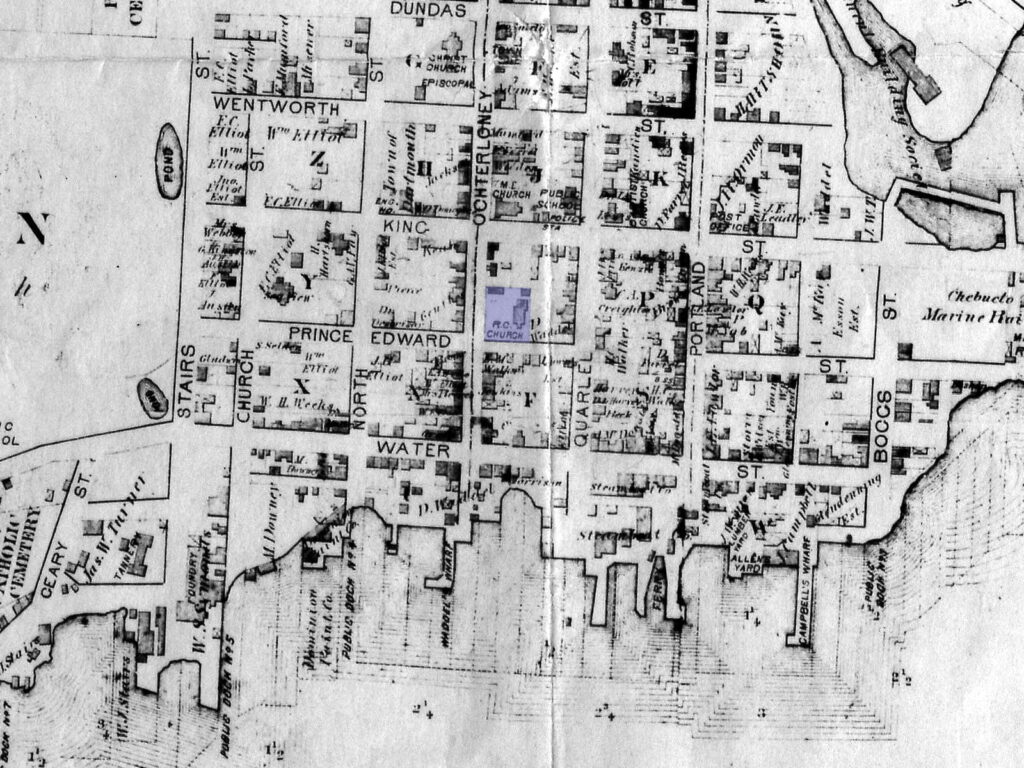
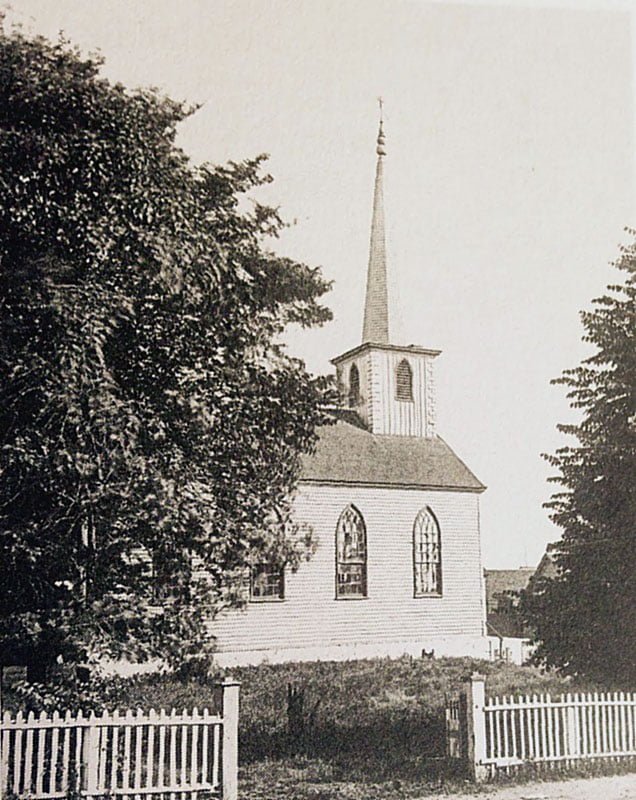
From the Acadian Recorder in 1829:
“On Monday the frame of a new Catholic chapel was raised, in this delightfully situated little village. The caulking of the Steam Boat was nearly completed, and she appears about ready for her machinery; piles are driving, and repairs making at the wharf intended for her use. Considerable animation seemed to pervade every quarter, which made the town appear very attractive. We are glad to witness indications of improvement in Dartmouth; we augur that (before) long it will increase rapidly in size and value. Independent of its being the outlet for the Shubenacadie Canal, it has many attractions which must operate favorably on her circumstances accordingly as Halifax improves. With a south-west aspect; sheltered from keen north and east winds by hills; enjoying a delightful sea scene and breeze, possessing romantic walks along the shores, and through the surrounding very picturesque country; having the retirement of country life, with the convenience of being divided from the metropolis by not more than a ten minute sail; we think that Dartmouth to the invalid and to many other classes holds out particular inducements as a place of residence. We are too apt to overlook the advantages lying close at our hand, searching for those which, not better, are more distant and costly.”
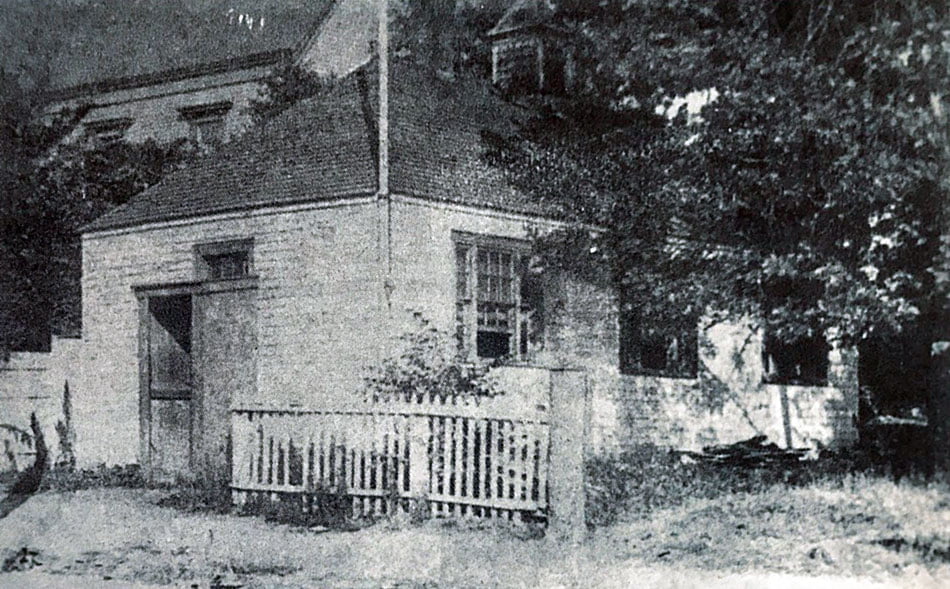
St. Peter’s hall, seen above, was leased to the town for classroom space to supplement new Central School. It was known as “Miss O’Toole’s school.” This building is still standing — though it was moved — it’s now located on Oakdale Crescent, where for a period of time it served as the neighborhood corner store.
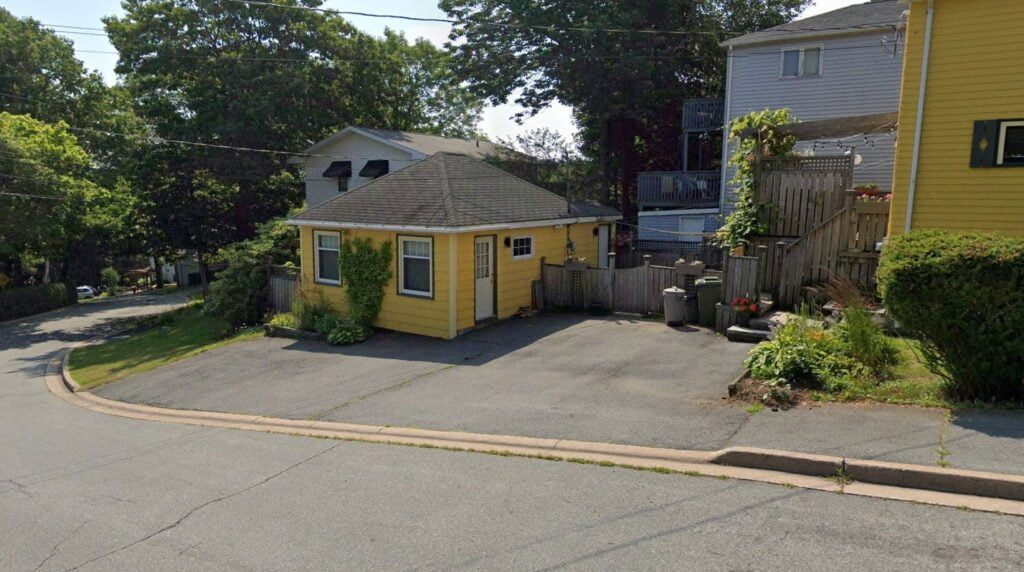
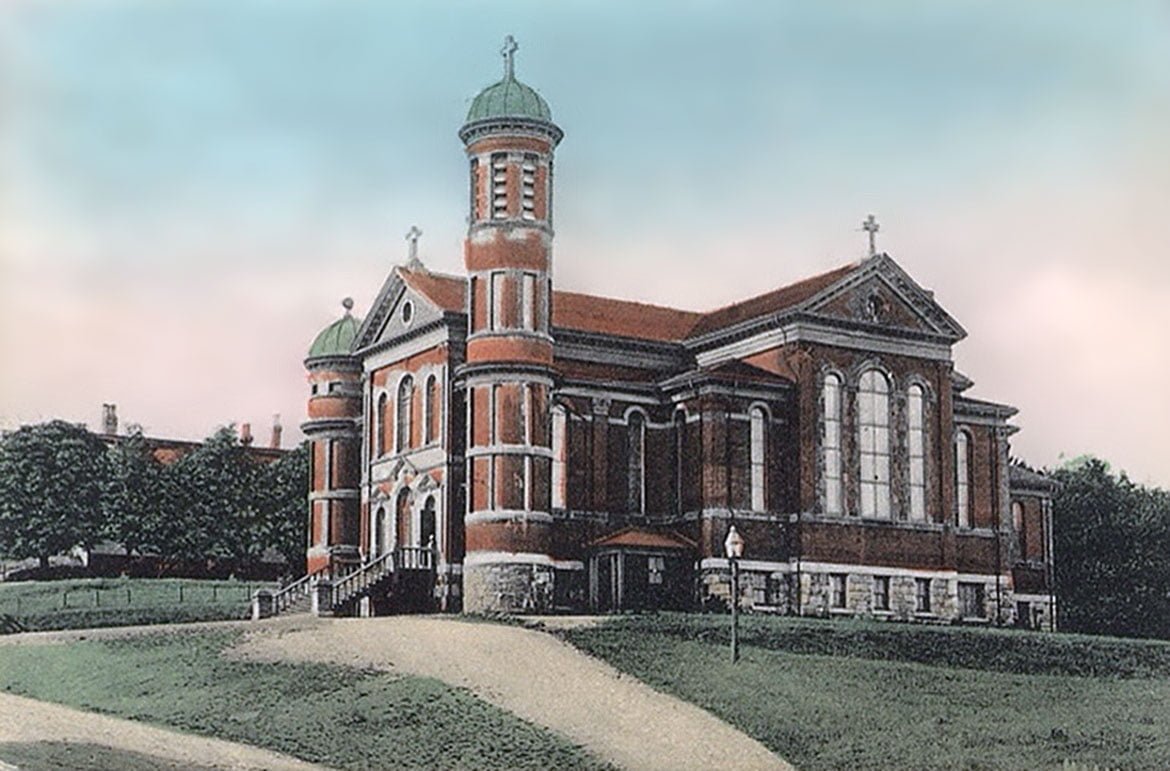
The corner stone of the new St. Peter’s Church seen above was laid on July 2, 1891 and dedicated on July 7, 1901.

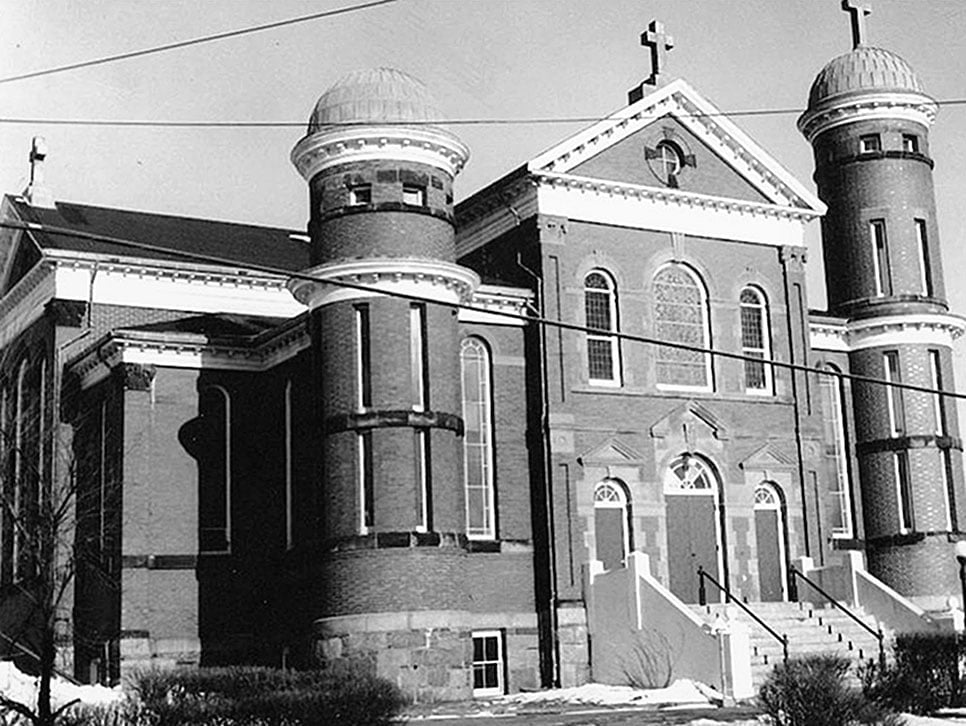
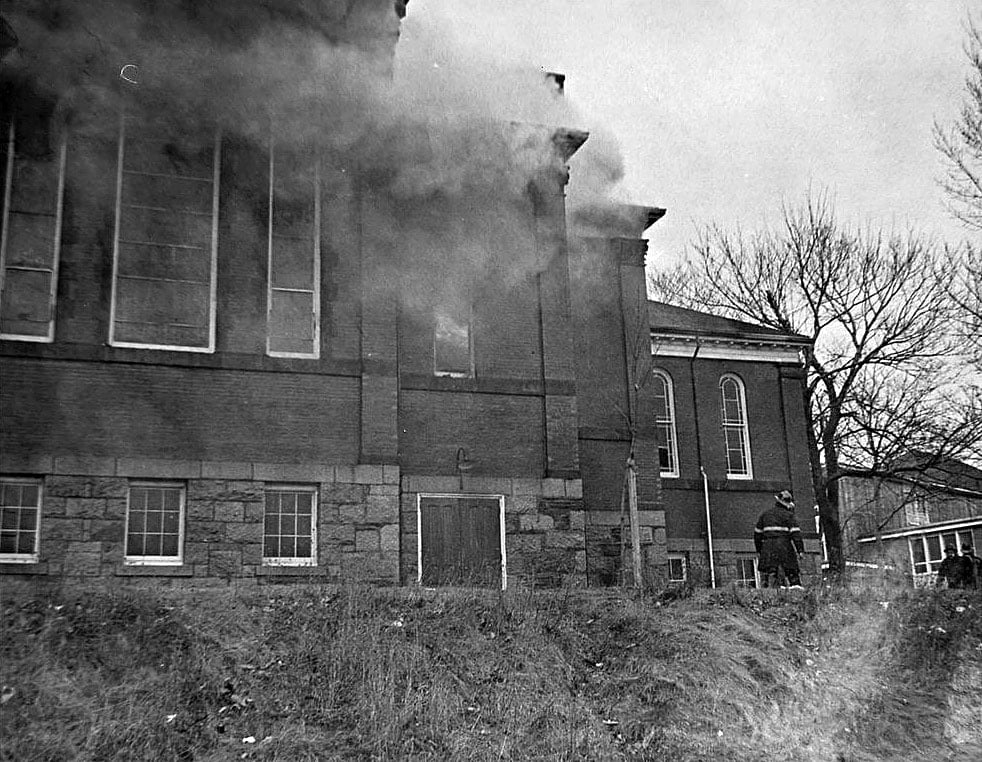
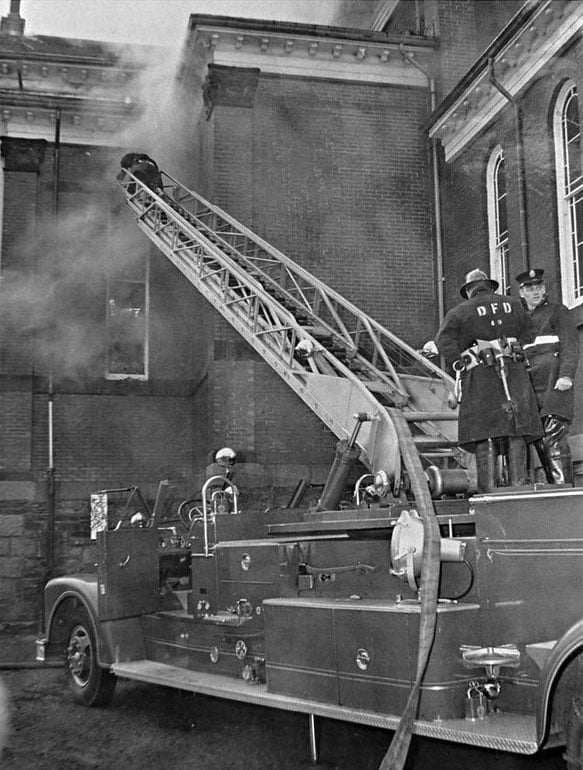
St. Peter’s Church fire, December 28, 1966.
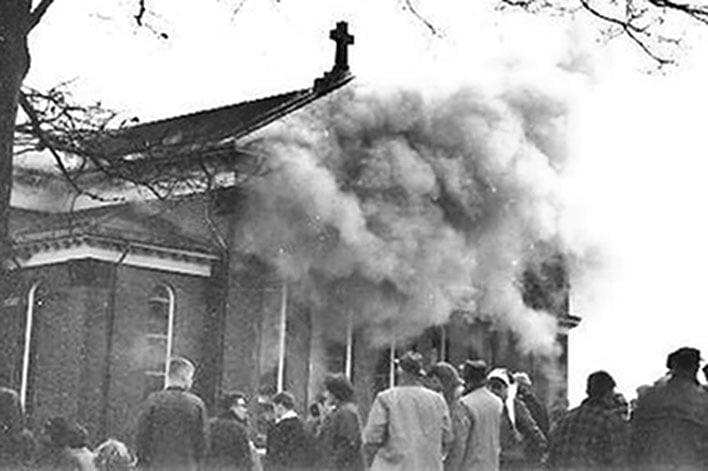
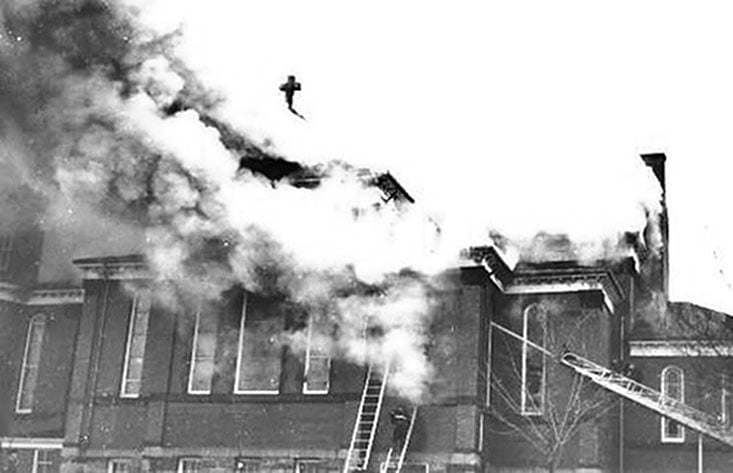
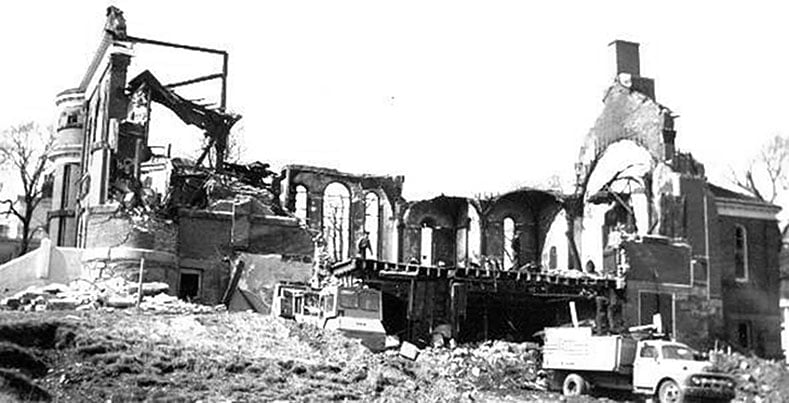
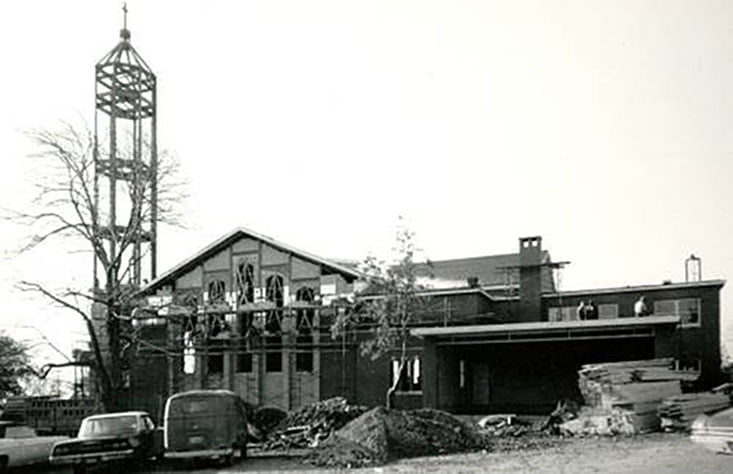
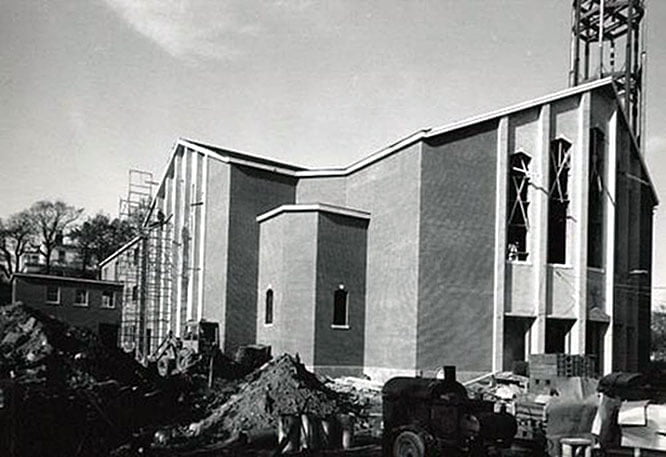
The third St. Peter’s Church under construction, completed in 1969, consecrated on June 29th of that year.
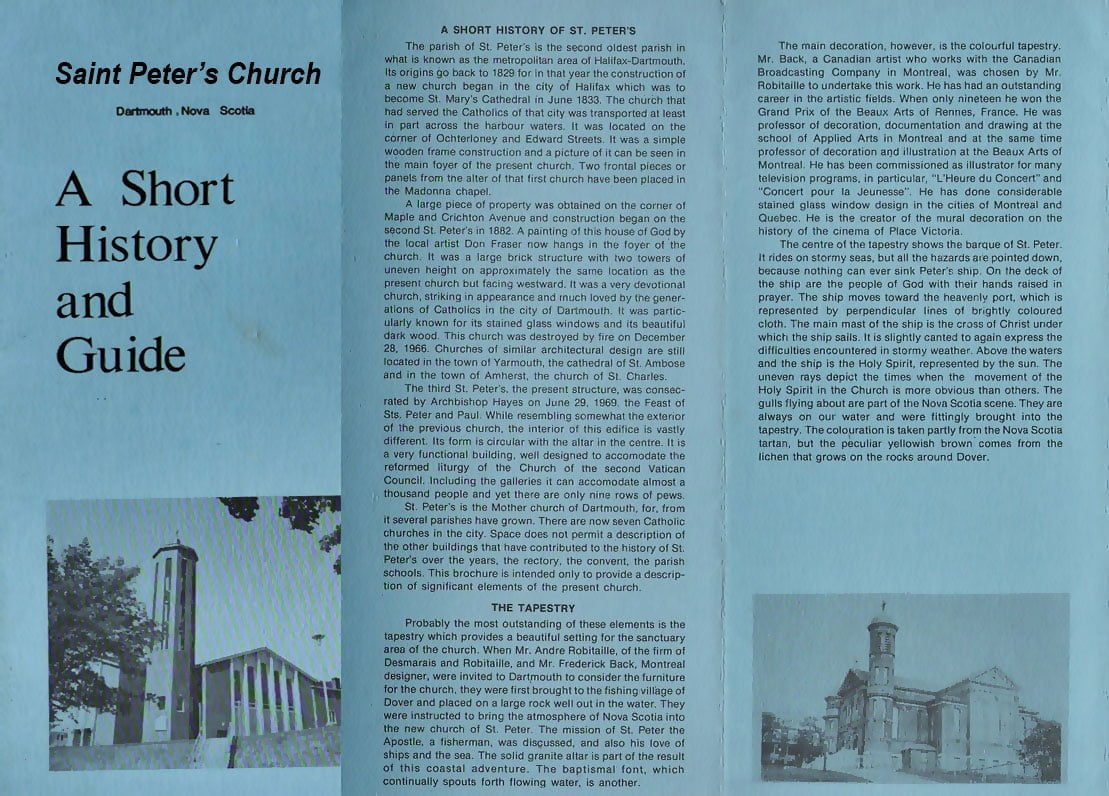
A Short History of St. Peter’s: The parish of St. Peter’s is the second oldest parish in what is known as the metropolitan area of Halifax-Dartmouth. Its origins go back to 1829 for in that year the construction of a new church began in the city of Halifax which was to become St. Mary’s Cathedral in June 1833. The church that had served the Catholics of that city was transported at least in part across the harbour waters. It was located on the corner of Ochterloney and Edward Streets. It was a simple wooden frame construction and a picture of it can be seen in the main foyer of the present church. Two frontal pieces or panels from the altar of the first church have been placed in the Madonna chapel.
A large piece of property was obtained at the corner of Maple and Crichton Avenue and construction began on the second St. Peter’s in 1882. A painting of this house of God by the local artist Don Fraser now hangs in the foyer of the church. It was a large brick structure with two towers of uneven height on approximately the same location as the present church but facing westward. It was a very devotional church, striking in appearance and much loved by generations of Catholics in the city of Dartmouth. It was particularly known for its stained glass windows and its beautiful dark wood. This church was destroyed by fire on December 28, 1966. Churches of similar architectural design are still located in the town of Yarmouth, the cathedral of St. Ambrose and in the town of Amherst, the church of St. Charles.
The third St. Peter’s, the present structure, was consecrated by Archbishop Hayes on June 29, 1969, the Feast of Sts. Peter and Paul. While resembling somewhat the exterior of the previous church, the interior of this edifice is vastly different. Its form is circular with the altar in the center. Is is a very functional building, well designed to accommodate the reformed liturgy of the Church of the second Vatican council. Including the galleries it can accommodate almost a thousand people and yet there are only nine rows of pews.
St. Peter’s is the mother church of Dartmouth, for, from it several parishes have grown. There are now seven Catholic churches in the city. Space does not permit a description of the other buildings that have contributed to the history of St. Peter’s over the years, the rectory, the convent, the parish schools. This brochure is intended to provide a description of significant elements of the present church.
The Tapestry: Probably the most outstanding of these elements is the tapestry which provides a beautiful setting for the sanctuary area of the church. When Mr. Andre Robitaille, of the firm of Desmarius and Robitaille, and Mr. Frederick Back, Montreal designer, we’re invited to Dartmouth to consider the furniture for the church, they were first brought to the fishing village of Dover and placed on a large rock well out in the water. They were instructed to bring the atmosphere of Nova Scotia into the new church of St. Peter’s. The mission of St. Peter the apostle a fisherman was discussed, and also his love of ships and the sea. The solid granite altar is part of the result of this coastal adventure. The baptismal font, which continually spouts fourth flowing water, is another.
The main decoration, however, is the colorful tapestry. Mr. Back, a Canadian artist who works with the Canadian broadcasting company in Montreal, was chosen by Mr. Robitaille to undertake this work. He has had an outstanding career in the artistic fields. When only 19 he won the Grand Prix of the beaux arts of Renees, France. he was professor of decoration, documentation and drawing at the school of applied arts in Montreal and at the same time professor of decoration and illustration at the Beaux Arts of Montreal. He has been commissioned as illustrator for many television programs, in particular, he has done considerable stained glass window design in the cities of Montreal and Quebec. He is the creator of the mural decoration on the history of the cinema of place Victoria. The center of the tapestry shows the bark of St. Peter. It rides on stormy seas, but all the hazards are pointed down, because nothing can ever sink Peter’s ship. On the deck of the ship are the people of God with their hands raised in prayer. The ship moves towards the heavenly port, which is represented by perpendicular lines of brightly colored cloth. the main mast of the ship is the cost of Christ under which the ship sails. It is slightly canted to again Express the difficulties encountered in stormy weather. Above the waters and the ship is the holy spirit spirit, represented by the sun. The uneven race depict the times when the movement of the holy spirit in the church is more obvious than others. The goals flying about are part of the Nova Scotia scene. They are always on our water and we’re fittingly brought into the tapestry. The coloration is taken partly from the Nova Scotia tartan, but the peculiar yellowish Brown comes from the lichen that grows on the rocks around Dover.

Mr. Back took several samples home with him to Montreal and numerous photographs in order to obtain the correct shade. The weaving of the cloth was done by a Mrs. Thomas of Montreal and the stitching was done by several hands, but to a large extent, it is the work of Mrs. Back, wife of the designer.
The stained glass windows: The Resurrection
The three sets of large windows, a kind of triptych, make up a unified hole, representing, on the east side of the church the creation of life, over the front entrance the new, resurrected life, and on the West side the life of the body of Christ infused by the holy spirit. We just have the actions of the three persons of the trinity. The middle Windows depict the resurrection, the rising of Christ, the son of god, from the tomb to the new and eternal life. The artist gives us the early morning scene of the Easter event. To the left, near the bottom, there are the darker brown colors representing the tomb. Rising out of the tomb, there is the glorified figure of Jesus, in the bright gold and yellow colors, with the red indicating the scars of the crucifixion. Just as in the East windows, we have the creation of the human, so this Christ embodies us all in the recreation of humanity, the restoration of Divine Life. The sweep of this movement is reflected in the tapestry behind the presidential chair by the bark of Peter. Also, similar colors are used in the skillful work of art.
The Creation
The creation depicted in the windows on the east side has, as it’s dominant feature, the figure of mankind before the rejection of God’s will. It stands out and surmounts the rest of creation which has been designed, showing one layer or stratum of life superimposed on the other, suggesting The evolutionary aspect of God’s action. The six days of creation, as described in the first chapter of genesis, are well brought out. A great variety of colors is used to remind the viewer of the innumerable species of life. At the bottom of the windows, we have fossils and the remnants of prehistoric animals. Vegetable matter is suggested by the use of wheat and other plants. Various forms of animal life can also be seen, snakes, mollusks, snails, fish, etc. In the sky, as well, birds fly about, and knowingly expressing the beauty of God’s work. In the upper section, we may note other references to the story of creation, the separation of night from day, the dividing of the water from the land. A kind of spiritual dome, the heavens, surmounts this, giving us the strong feeling that this dynamic life force emanates from the Creator who said that “it was good”.
The Life of the Church
The windows on the west side, the creation of the church, while slightly resembling that of the creation of the world, are quite different. Here, there is more of a sense of movement, expressed by the sharpness of the lines, the shapes and vivid colors. The holy spirit, symbolized by the dove, tower is above all and envelops the whole with a protective aura, where the reds represent the fire, the zeal of love. Under the action of the spirit of god, the apostles respond with enthusiasm as they become the temples of God’s indwelling. They reach upwards to receive the Divine Life of grace, represented by the vertical and oblique lines which descend from above. The small dark pieces of glass, closely formed together suggest the multiplex technology of the modern world and indeed the great variety of people as well. the blue trapezium shapes can be visualized in two ways, they are openings in the heavens which they resemble by virtue of their blue color and these windows remind us that the church should not look inward but rather reach out and project toward the whole of humanity, responding to the words of Christ “go and teach All Nations”. Stained glass has been placed in two other areas of the church. In the Madonna chapel two events in the life of the blessed Virgin Mary have been depicted. In both cases the design is in keeping with the modern designs of the larger windows. On the right side is the immaculate conception with the suggestion of a lily while on the left of the chapel the quote assumption quote is portrayed describing a passage to eternal life near the Tabernacle and to the right are three small Windows which portray symbols of the Eucharistic Christ. Stocks of wheat and grapes from the vine are easily recognized in this unified scene. Mr. Beck has provided his recommendations and artistic knowledge for our stained glass windows but they’re design has been accompanied accomplished by Sylvie Bouchard.
The Altar of the Blessed Sacrament
The Tabernacle was preserved from the previous church and was a gift of the people of St. Peter’s in memory of Reverend George Courtney. It was carried out of the burning church by one who risked his life in order to save the blessed sacrament. it becomes a connection with the former church just as the panels in the Madonna chapel maintain a relationship with the first St. Peter’s. The drapes behind the Tabernacle and the veil that covers it are intended to represent the net that Peter cast into the sea to catch the large drought of fishes. Behind this netting is a greenish colored cloth that speaks of the ocean and white playing on the water. The design of the Tabernacle lamp is in keeping with the rest of this area.
The Black Statue of the Blessed Virgin
The second Church of St. Peter was destroyed by a fire that began about 2:00 in the afternoon of December 28th 1966. The so-called black Madonna stood in a special altar on the right side of the old church. After the fire had been extinguished it was noted that the wooden statue is almost intact while on the opposite side of the church the statue of Saint Joseph was very badly burned. The hands of the Virgin are slightly charred. The blackish effect is the result of the fire. unfortunately the darkening was not even so a light spray has been used to make it more uniform. The present chapel was built specifically for this purpose, to house this statue, for it was felt that our lady guarded the parish from any loss of life.
The Frontal Pieces from the First Altar
The two panels, one on each side of the Madonna, or part of the original altar in the first St. Peter’s. They were brought over from Halifax along with other parts of the church which was located on the corner of Ochterloney and Edward streets. When father Underwood began the building of the second St. Peter’s in 1892, this same altar was used in the lower part of the church. In 1896 the church was officially opened and the old altar was preserved downstairs and what later became Saint Anne’s chapel. The destructive fire of 1966 did not get into the lower chapel but in the salvage operations all that could be saved were the two panels of this altar. Dozens of coats of white paint were removed and the two wood panels were clearly outlined. They are believed to be a Flemish origin, probably of the 17th century. One depicts the Salvatore mundi savior of the world, the other is an image of St. Peter. The wood in the carved sections of these frontal pieces is teak. The surrounding boards are a very ancient white pine. They constitute a very important link with the early history of the church in Dartmouth and also of Halifax. They symbolize and recall the great faith that must have been required to build a church in Dartmouth in the early part of the 19th century. A description of the church should not overlook the statute of St. Peter which has been placed in the niche constructed for this purpose near the base of the tower. It was donated by a kind parishioner and is fashioned from linden wood. The word of God and the quote keys of the Kingdom quote our traditional in any depiction of the apostle Peter.
Pastors of St. Peter’s parish:
Rev. James Dunphy 1830 – 1832
Rev. Dennis Geary 1832 – 1845
Rev. James Kennedy 1845 – 1847
Rev. William MacLeod 1847 – 1848
Rev. Patrick Phelan, 1848 – 1851
Rev. James Dunphy 1851 – 1857
Rev. Denis Geary 1857 – 1862
Rev. Alexander MacIsaac 1862 – 1864
Rev. John Woods 1864 – 1885
Rev. Charles Underwood 1885 – 1923
Rev. George Courtney 1923 – 1939
Rev. John Burns 1939 – 1945
Rev. William Smith 1946 – 1954
Rev. Gerald Murphy 1954 – 1972
Rev. John R. Campbell 1972 – 1982
Rev. Louis Cassie 1982 –
[–“They symbolize and recall the great faith that must have been required to build a church in Dartmouth in the early part of the 19th century” from above, after referring to the fire that burned down the church on December 28th 1966, certainly made an impact.]

